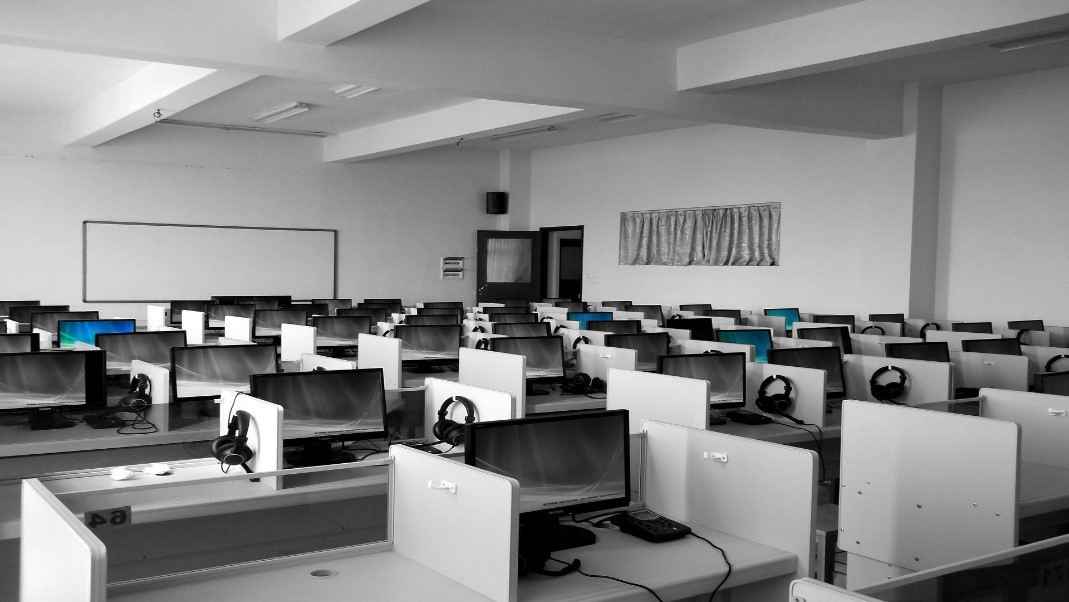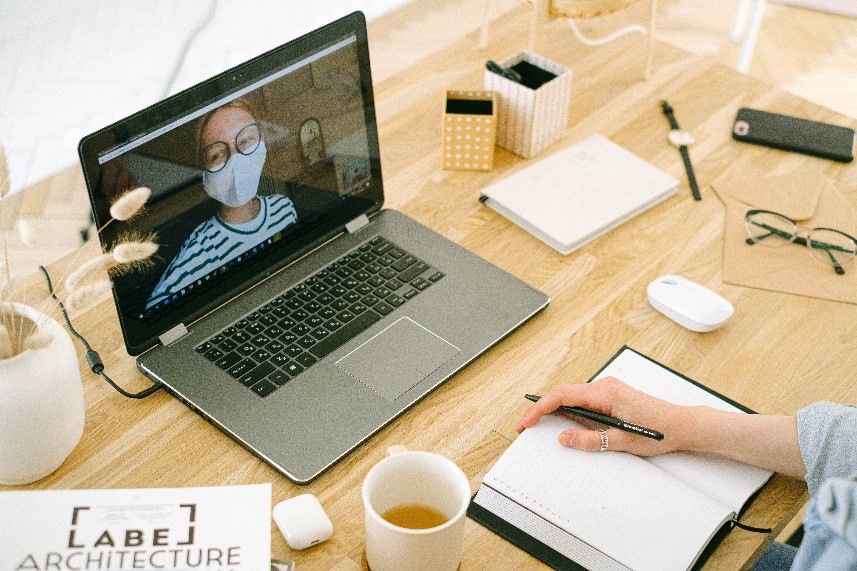In his book, Who Moved My Cheese?, Spencer Johnson used a unique parable to illustrate the effects of change on productivity and efficiency. Change in the workplace affects physical space, employees, and mindsets, and the world has certainly seen a lot of change recently. Shifts in traditional office settings have been disrupted by COVID-19, and the long-term impacts are vast.
In recent decades, offices have transitioned from cubicles to flex spaces with undesignated desks and work areas. Innovative leaders like Google and Zappos led the charge with progressive ideas to promote efficiency and productivity in the workplace. However, these office layouts and workspace designs do not meet the health and safety requirements brought about by COVID-19.

The Fear of Change
COVID-19 caused many businesses and shops to close their doors or limit operations due to lock down mandates. These changes occurred rapidly and were largely unexpected, and certainly unplanned. For some businesses, these changes were devastating. Now, business owners are tasked with updating work environments to maintain health and safety.
Office space changes related to COVID-19 are likely to come with some costs. New workspace layouts, sanitizer dispensers, increased cleaning services, temporary barriers, and other precautions have to be accounted for, and overall the cost of doing business will increase.
Changing the workspace will alter how employees behave. Johnson noted the fear that builds up when people are placed in new or unfamiliar situations, and as employees return to offices and shops, the fear is very real. Employers ramping up operations have to provide a safe workspace to ensure everyone feels comfortable while maintaining productivity.
Understanding the challenges faced by businesses after COVID-19 is the first step towards combating the fear of change. Employers who are aware of the issues they will face can better tackle them head-on, instead of letting fear continue to build. Consider the following ways your business may have to adapt and change after COVID-19.
Physical Office Space
Both office-based businesses and retail shops will require physical changes to ensure workspace is equipped to fight the spread of the virus. Reviewing your entire workspace is a great starting point and can help you determine long-term changes. Hospitals are a potential example for businesses during this time, and taking hints from healthcare can help retrofit existing spaces.
The changes needed for each business will be unique, and there is no one-size-fits-all answer. Everyone will weight short-term costs and long-term benefits differently to determine which changes will have the biggest impact on health and safety. Common alterations to physical office spaces and retail shops include the following items.
- Distancing cubicles and adding partitions to promote social distancing
- Clearly marking the floor to identify optimal social distancing between desks, checkout line spots, copier lines, bathrooms, or any other area where people may gather
- Replacing fabric panels or dividers with sanitary plastic or glass alternatives
- Adding Plexiglas or acrylic dividers between workspaces, checkout registers, tables, etc.
- Replacing existing furniture with furniture that includes anti-bacterial upholstery
- Temporarily removing or modifying job-share desks and common work areas
- Replacing stainless steel fixtures with brass or copper that are easier to clean
- Installing ultraviolet, germ-killing lights in vents and ducts
- Installing high-performance air filters
- Limiting access to walk-in traffic with bells, buzzers, or call buttons to gain entry
- Replacing soft-stone and unfinished wood surfaces that viruses can live on
- Updating carpet or removing carpet for flooring that is easy to clean and maintain
- Widening isles or paths to eliminate bottlenecks in retail shops or near office equipment
- Removing self-serve candy bowls, toothpicks, business cards, or similar items
- Adding touchless controls for alarms, lights, and temperature controls
- Limiting occupancy for lunchrooms, bathrooms, or similar areas where people may gather
- Temporarily replacing communal water tanks and fountains with bottled water
- Instituting cleaning processes for your staff
- Hiring a professional cleaning service to regularly disinfect your workspace or shop
Staff
Changes brought on by COVID-19 do not only impact the physical spaces businesses occupy. Employees can expect a great number of changes during this time, including new safe and health policies. In order to combat a fear of change or the uneasiness associated with the unknown, it is crucial to maintain consistent communication. Sending an email with a list of policies may not be enough to assuage fears and maintain a level of calm.
Consider adding signage around your workspace, utilizing video conferencing, and regularly checking in with your staff individually or in small groups to help with transitions. These constant touchpoints can remind staff of the changes put in place to protect their health and ensure their voices are heard while you create a “new normal” for the work environment. As employees become more engaged and involved with new policies and the process of changing the physical office space, they are more likely to support and maintain the changes.
As with physical workspace, the changes necessary for staff will be different at every business. Consider the following requirements or guidelines to protect your staff, customers, vendors, or visitors.
- Requiring masks to be worn in public spaces
- Rotating or staggering shifts to reduce the number of people in the office or shop at one time
- Requiring hand washing upon entering the premises
- Providing hand sanitizer at desks or cash registers
- Instituting a clean desk policy and providing space for employees to securely store their personal belongings
- Asking employees to not share equipment or supplies
- Implementing temperature checks at the beginning of each day or shift
- Providing equipment to facilitate video conferencing, including headsets and web cams
Mindset
With shutdown orders and limited access to public places, employees have been isolated for weeks. Returning to an office space or retail shop can cause a great deal of anxiety and stress as their daily routine changes once again. Staff who were once fearful of the unknown, remote work, or the possibility of furlough are not worried about the safety of their workspace, being around coworkers, and protecting their families. In order to provide support for employees and help ease the transition, employers can demonstrate flexibility during this time.
The ultimate goal is to provide a safe environment for your staff, which allows them to serve your customers and carry out their job responsibilities without fear. Reducing chaos and working through physical changes prior to fully ramping up your business can keep fears at bay. Many healthcare providers are offering video conferences where employees can share their concerns with a professional facilitator. Holding these conversations before going back to the office can allow employees to share their concerns and frustrations ahead of time.
Maintaining open, candid, and direct communication can also help ease the minds of your staff. Provide feedback whenever possible and request feedback from your employees in return. Keep in mind the stress that goes along with a major transition, and communicate with compassion and empathy. If employees feel supported, they are more likely to have positive attitudes, higher productivity, and better customer service.
Ramping up operations is crucial to the health of many businesses during this time. Small businesses, retail shops, and service providers are trying to return to some level of normal in order to stabilize the economy and avoid losing jobs. As doors reopen and employees return to their workspace, employers will be faced with challenges. Working through changes to physical space, staff requirements, and overall mindset with a critical eye and compassion can mean the difference between failure and success after COVID-19.




